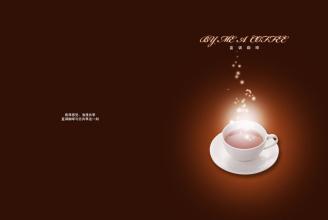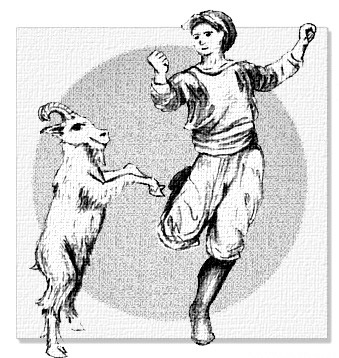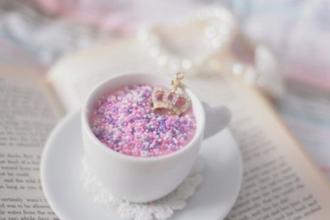The origin of cappuccino
The monks of the St. Franciscan Church (Capuchin), founded after 1525, all wore brown robes and pointed hats. When the St. Franciscan Church spread to Italy, the locals thought that the monks' clothes were very special, so they gave them the name Cappuccino. The Italian word refers to the loose robes and small pointed hats worn by monks, derived from the Italian word "headscarf" or Cappuccio.
However, Lao Yi loved coffee and found that when espresso, milk and milk foam were mixed, the color was like the dark brown robe worn by monks, so he came up with a drink with coffee and sharp milk bubbles, which was named Cappuccino. The word was first used in English in 1948, when a report in San Francisco first introduced cappuccino beverages, and it was not until 1990 that it became a familiar coffee drink. It should be possible to say that the word Cappuccino coffee comes from the St. Franciscan Church (Capuchin) and the Italian headscarf (Cappucio). It is believed that the original word makers of Cappuccino never dreamed that the monks' robes would eventually become the name of a coffee drink.
Cappuccino is also related to the name of a monkey.
It's not over yet. There is a small monkey in Africa with a black cone-shaped hair on its head, much like a pointed hat on a St. Franciscan robe, hence the name Capuchin, which was first used by the British in 1785. Hundreds of years later, the word Capuchin. The generation of coffee drink names and monkey names have always been interesting anecdotes of literati.
Dry cappuccino and wet cappuccino
Did you know that cappuccinos can be dry or wet? The so-called dry Dry Cappuccino refers to the conditioning method with more milk bubbles and less milk. it tastes stronger than milk and is suitable for people with heavy taste. When it comes to wet cappuccino (Wet Cappuccino), it refers to the practice of fewer milk bubbles and more milk, with milk fragrance overshadowing the thick coffee flavor, which is suitable for those with light taste. The flavor of the wet cappuccino is similar to that of the popular latte. Generally speaking, the taste of cappuccino is heavier than latte. If you have a heavy taste, you might as well order cappuccino or dry cappuccino. If you are not used to the heavy smell of coffee, you can order latte or wet cappuccino.
Cappuccino is filled with steamed milk on an extra-strong Italian coffee. At this time, the color of coffee is like a cappuccino monk covering a dark brown coat with a headscarf, hence the name caffeine.
The full-bodied taste of espresso, accompanied by lubricated foam; it has some flavor of "collecting essence and dew". Sprinkled with foamed milk with cinnamon powder and mixed with the aroma of bottom-up Italian coffee, a new generation of coffee makers are constantly acting on it.
Production of cappuccino coffee:
On the basis of Italian espresso, add a thick layer of foaming milk to become a cappuccino. The quality of espresso can be seen in milk and foam, but it is still an important factor in determining the taste of cappuccino. Pour the partially skimmed milk into a pot, then use a foamer to foam and inflate the milk, and let the milk be as uniform as whipped cream without burning. The cappuccino coffee cup should be warm or the milk foam will spread. You can usually put these cups on the top of the coffee maker to keep warm. Pour the milk and foam on top of the espresso and naturally form a layer, just like wrapping the coffee below. Note that the brewed Italian coffee is about five cents full, and the hot milk that has been foamed is about eight cents full. Finally, you can sprinkle a little cinnamon or chocolate powder and pour the rest of the milk together to make a delicious cappuccino.
The traditional cappuccino is 1/3 espresso, 1/3 steamed milk and 1/3 foamed milk. Cappuccino? Latte is actually a change in Italian coffee (Italians are indeed fickle), except that the proportion of coffee, milk and milk foam can be slightly changed to 1:2:1.

Important Notice :
前街咖啡 FrontStreet Coffee has moved to new addredd:
FrontStreet Coffee Address: 315,Donghua East Road,GuangZhou
Tel:020 38364473
- Prev

The hometown Origin Culture of Coffee
According to the study of the origin of coffee, it is agreed that the earliest place of origin of coffee should be Ethiopia in Africa (ancient Abyssinia), which has produced magical fruits that have affected the world to this day. The legend of the origin of coffee is generally accepted as the legend of Ethiopian shepherds. The story begins with a goat: a man named Caldy (
- Next

Drinking coffee is also a kind of culture, all kinds of exquisite can not be ignored.
When Europeans first came into contact with coffee, they called this seductive drink Arabian wine, and when conservative Catholics cursed coffee as the drink of the devil Satan, they never thought of what a precious thing they inherited from the pagans. As the first region in the world to drink and produce coffee, Arab coffee culture is like its coffee.
Related
- Beginners will see the "Coffee pull flower" guide!
- What is the difference between ice blog purified milk and ordinary milk coffee?
- Why is the Philippines the largest producer of crops in Liberia?
- For coffee extraction, should the fine powder be retained?
- How does extracted espresso fill pressed powder? How much strength does it take to press the powder?
- How to make jasmine cold extract coffee? Is the jasmine + latte good?
- Will this little toy really make the coffee taste better? How does Lily Drip affect coffee extraction?
- Will the action of slapping the filter cup also affect coffee extraction?
- What's the difference between powder-to-water ratio and powder-to-liquid ratio?
- What is the Ethiopian local species? What does it have to do with Heirloom native species?

